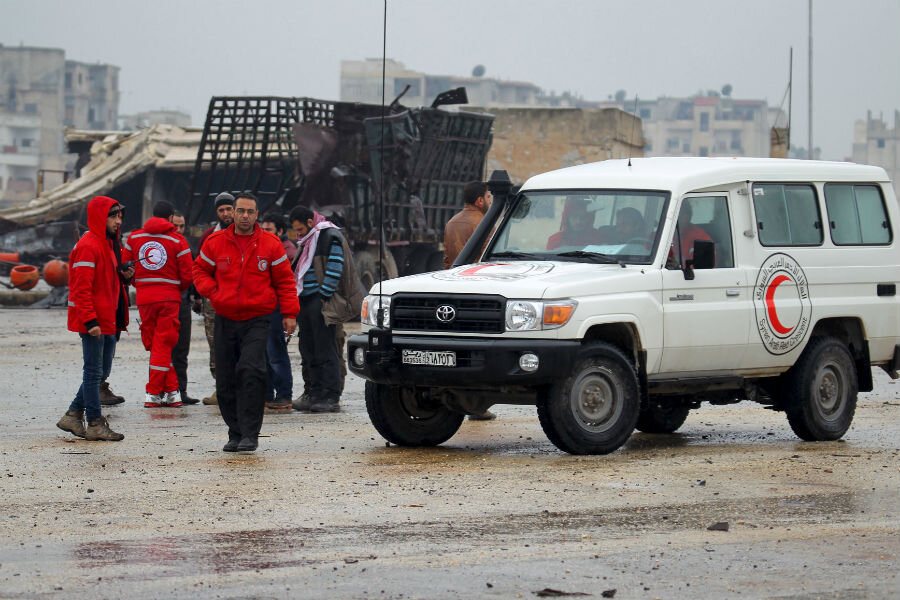Syrian food aid efforts: Enough to stave off starvation?
Loading...
Following the appearance of heartbreaking photos of emaciated Syrians in mainstream media outlets last week, the international aid community has successfully sent convoys of food to communities under siege and suffering from starvation.
The Syrian government agreed late last week to allow aid into the Syrian cities of Madaya, Kefraya, and Foua, where rebel forces have closed residents off from access to food and medicine for close to six months.
The United Nations-backed convoy set out on Monday from Damascus with the Red Cross and Syrian Red Crescent, and appeared to arrive safely, according to Pawel Krzysiek, a spokesperson for the Red Cross, who tweeted the convoy's arrival.
The food comes at a critical time for the towns, which have not seen aid convoys since mid-October. Five people died of suspected malnutrition in Madaya on Sunday alone, The New York Times reports, bringing the total number of hunger-related deaths in Madaya to 28 in December, according to Doctors Without Borders.
"Madaya is now effectively an open-air prison for an estimated 20,000 people, including infants, children, and elderly,” said Brice de le Vingne, Doctors Without Borders director of operations, in a statement.
The aid shipment that arrived in Madaya from the United Nations' World Food Programme is expected to be enough food for around 40,000 people and is expected to last about a month, The Associated Press reports.
Similarly, in Foua and Kefarya, a UN-led convoy from the city of Homs in western Syria is expected to be able to provide food to 20,000 people for a month.
In Madaya, Al-Manar, a Hezbollah-owned TV channel, showed men, women, and children waiting for the convoys at the town's primary entrance. In interviews, residents accused fighters inside the town of taking aid that entered the town in October and selling them to residents at exorbitant prices, the AP reports.
"Our children are dying of hunger," a school teacher told the station, saying she walked to the entrance of the town to make sure she received the assistance directly.
But aid workers warn that a one-off delivery falls far short of relief.
"Whatever we bring in, it's not enough," said Iyad Nasr, a spokesman for the UN's Office for the Coordination of Human Affairs. He told NBC News that the UN and others were hoping for unconditional access to the town and other besieged villages, in accordance with United Nations Security Council resolutions that call for unconditional delivery of aid across front lines.
Spokeswoman Dibeh Fakhr, from the International Red Cross, agrees. She said the aid will go only so far.
"One short delivery will not be the solution," she said, in an interview with CNN. "What is needed is regular access."






